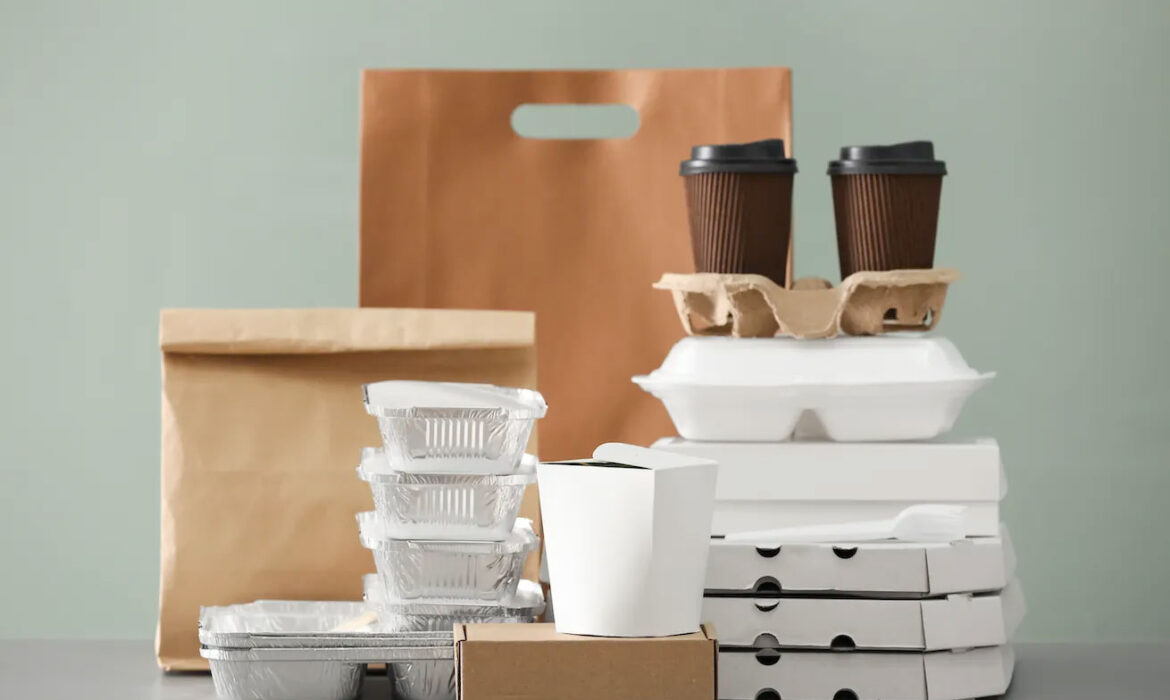
Who hasn’t ordered takeaway food? It always arrives in a special container that preserves the temperature and freshness of the food, and often these containers are disposable. Several materials are usually used to make takeaway food containers; it’s worth using different materials for each type of food, besides, not all materials are one hundred percent eco-friendly. Below are some of the most commonly used materials for takeaway food boxes:
1. Cardboard/paperboard
Cardboard and paperboard are among the most popular materials for take-out containers due to their lightweight nature and ability to be printed with branding. These containers are typically biodegradable and recyclable, making them an eco-friendly choice. They can be treated with a food-safe coating to resist grease and moisture. The example of box customization can be found here: https://univest-pack.com/product-category/boxes/.
- Often used for pizza boxes, burger boxes, and food trays for items like sandwiches or salads.
2. Wax-coated paper
Wax-coated paper or cardboard is paper treated with a layer of wax to make it resistant to grease and moisture. Such material offers a lightweight, disposable, and recyclable option that can hold greasy or wet foods without leaking.
- Often used for take-out sandwiches, wraps, or baked goods.
3. Corrugated cardboard
Corrugated cardboard is a sturdier type of paper-based material, consisting of a fluted layer between two flat layers. It is durable, lightweight, and offers insulation, making it suitable for holding hot or heavy food. It is also recyclable and biodegradable.
- Is used for pizza boxes, large food containers for take-out meals, or packaging for food that requires more strength and insulation.
4. Compostable/biodegradable materials
These materials are made from plant-based resources, such as sugarcane (bagasse), corn starch, or bamboo. These materials are environmentally friendly, as they decompose more easily than traditional plastics or styrofoam.
- Often used for eco-friendly take-out containers, bowls, and plates, as well as biodegradable cutlery and lids.
5. Plastic
Plastic is another widely used material, particularly for containers that need to be airtight or microwave-safe. Certain plastics like polypropylene (PP) or polyethylene terephthalate (PET) are microwave-safe, lightweight, and durable. Some types of plastic are recyclable, though it depends on local recycling facilities.
- Often used for clear salad boxes, microwavable take-out containers, and lids.
6. Aluminum
Aluminum is a metal that is lightweight, durable, and has excellent heat-retention properties. Recyclable and suitable for both hot and cold foods. It is ideal for meals that need to be reheated or kept warm.
- Often used for baked goods, casseroles, and other hot meals that need to retain heat during transport.
7. Styrofoam
Styrofoam is a type of polystyrene foam known for being lightweight and insulating. It keeps food hot or cold for extended periods. However, it is not environmentally friendly, as it is difficult to recycle and takes a long time to decompose.
- Used for take-out containers for soups, hot meals, and beverages, though its usage has been restricted in many places due to environmental concerns.
With increasing concerns about sustainability, many food establishments are moving toward eco-friendly options such as compostable and biodegradable materials. The choice of material often depends on the type of food, its temperature requirements, and the need for an environmentally conscious option.



